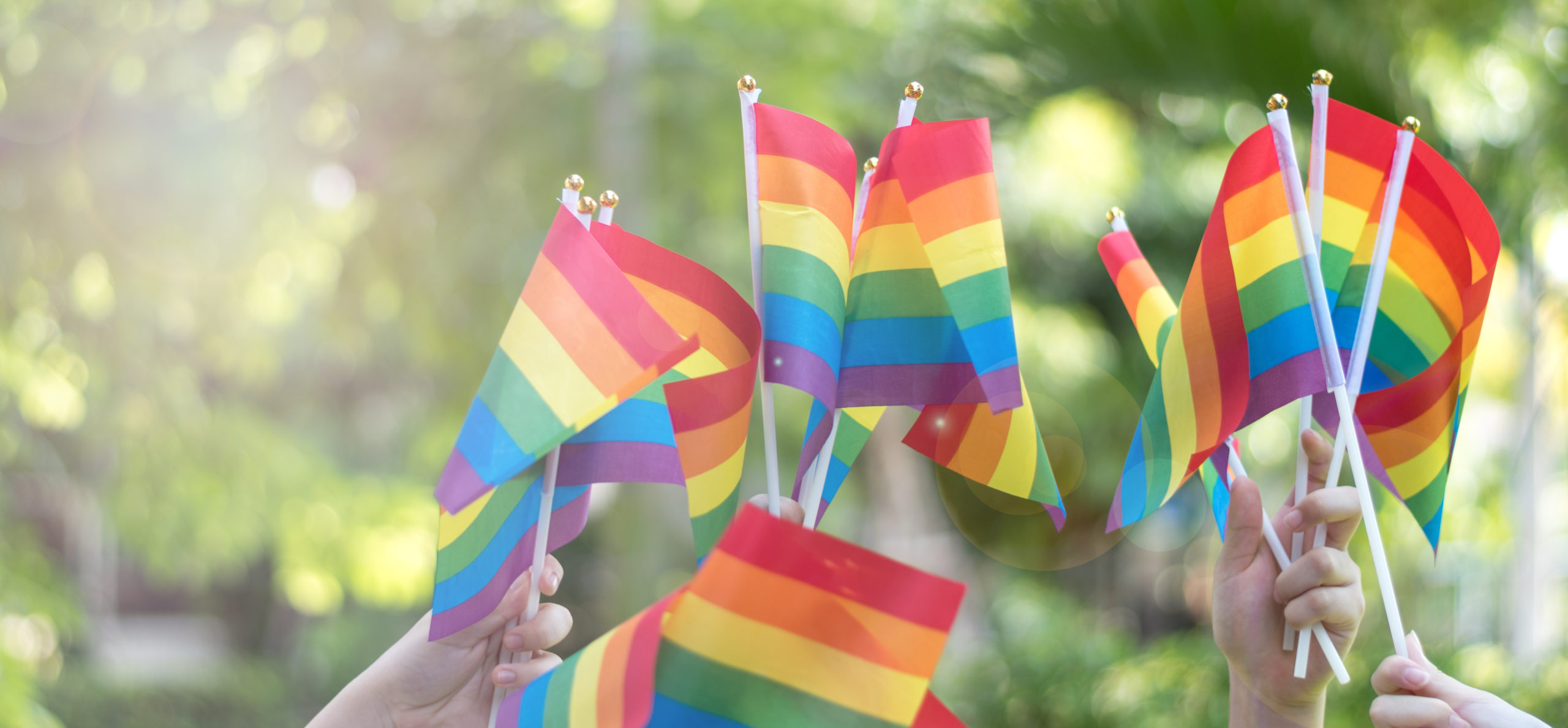
June is Pride month – an annual celebration of, and support for, the lesbian, gay, bisexual, transgender and queer communities (often shortened to “LGBTQ”). It is almost impossible not to see the rainbow flag flying proudly during the Pride festivals, signifying LGBTQ identity and solidarity. The flag was designed in 1978 by Gilbert Baker (1951 – 2017), a US artist and gay rights activist, and has since become the worldwide symbol of LGBTQ Pride. It has achieved such prominence that, in 2015, the Museum of Modern art in New York placed it alongside other universal symbols including the ubiquitous “@” sign, the Creative Commons logo and the recycling symbol¹.
Given just how well known and internationally recognised the Pride flag is, it may come as a surprise to know that Mr Baker did not apply for a trade mark or attempt to claim design or copyright protection in the flag. In fact, he teamed up with a civil rights attorney, Matt Coles, to prevent an attempt by an LGBTQ+ advocacy organisation from registering a US trade mark for the Pride flag. It is interesting to consider what factors Mr Baker will have had to weigh up when making his decision as to how to deal with the flag as an item of intellectual property.
Could the rainbow flag have been registered as a trade mark?
It is a common misconception that in order for a graphic symbol to be registered as a trade mark, it needs to include words or at least some recognisable shapes or pattern. In fact, under UK trade mark law at least, it is even possible to register a trade mark for a single colour if there is sufficient acquired distinctiveness – that is, if consumers recognise the colour as indicating that particular goods or services come from the trade mark owner as opposed to any other supplier. For instance, Tiffany Blue is associated with Tiffany the upscale jeweller, while many T-Mobile (now known as EE in the UK) subscribers will recognise the bright magenta colour.
And of course, the rainbow flag is not a single colour – it is a much more complex design. The bright and beautiful colours of the flag reflect the diversity of the LGBTQ community. The initial flag was made up of eight symbolic colours: hot pink (sex), red (life), orange (healing), yellow (sunlight), green (nature), turquoise (magic/art), indigo (serenity) and violet (spirit). However, the most familiar Pride Flag consists of six colours: red, orange, yellow, green, blue, and violet. The flag is typically flown horizontally, with the red stripe on top, as it would be in a natural rainbow. Over the years various Pride flags have been adopted, including the Progress Pride Flag – designed to adopt a more inclusive approach by adding the colours white, pink, and light blue to reflect the colours of the transgender flag, as well as brown and black stripes to represent people of colour and those lost to AIDS.
Under UK trade mark practice, a sign will be considered inherently registrable if it is capable:
a. of being represented in the register in a manner which enables the registrar and other competent authorities and the public to determine the clear and precise subject matter of the protection afforded to the proprietor, and
b. of distinguishing goods or services of one undertaking from those of other undertakings.
And the Act goes on to make clear that “a trade mark may, in particular, consist of words (including personal names), designs, letters, numerals, colours, sounds or the shape of goods or their packaging”.
Case law confirms that, to be represented graphically, colour marks must be presented in a way that is “clear, precise, self-contained, easily accessible, intelligible, durable and objective” as per Sieckmann C-273/00 (Libertel C-104/01). Graphical representation is not the only criteria a colour mark has to meet, it must also comply with specific rules (absolute grounds of refusal e.g. it must be distinctive) before it is considered registrable by the UKIPO.
Taking the above into consideration, the combination of colours which makes up the rainbow Pride flag possesses all the qualities of a trade mark. As such, Mr Baker was free to apply for protection should he have wished to.
To protect or not to protect?
In most business contexts, the primary benefit of holding a trade mark registration is in order to keep control over use of the symbol – for instance to prevent competitors from using a confusingly similar mark which could cause customers to buy their product or service thinking it is yours, and so protect your market. It is perhaps easy to see why this was not of interest to Mr Baker. That said, the act of registering a mark does not automatically prevent others from using it – the owner is free to licence its use as widely as they wish. One option available to Mr Baker would therefore have been to register it but offer free licences as he felt appropriate, or even charge a small royalty to corporate users – possibly using the income to support LGBTQ causes. This approach would also have reduced the risk of the flag symbol being used by organisations with different agendas and potentially losing its originally intended meaning.
However, on the flip side, restricting use of the rainbow flag symbol not only ran contrary to the spirit in which it was designed, but could also have limited its success. After all, it is through the flag’s wide adoption and inclusive nature that it has come to be so iconic – and Mr Baker had the foresight to see that. He explained that he had “created the flag for everyone” and wanted to keep it free for use by all. In Mr Baker’s own words:
“I thought that we needed that kind of symbol, that we needed as a people something that everyone instantly understands. [The Rainbow Flag] doesn’t say the word ‘Gay’, and it doesn’t say ‘the United States’ on the American flag, but everyone knows visually what they mean. And that influence really came to me when I decided that we should have a flag, that a flag fit us as a symbol, that we are a people, a tribe if you will.”¹
So Gilbert Baker’s “free for all” approach was not only an honourable one, but on balance the right one. Thanks to the free access to the flag, as well as strong community support, it has had huge take-up, and the respect it commands ensures that its meaning remains clear. As a result, the rainbow flag as it is today is more than just a logo – it is a symbol that unifies an entire community worldwide, signifying love, inclusivity and acceptance.
GJE takes PRIDE in supporting diversity & inclusion in the IP profession. We are a proud member of IPInclusive and supporter of IP Out.
¹https://www.moma.org/explore/inside_out/2015/06/17/moma-acquires-the-rainbow-flag/

